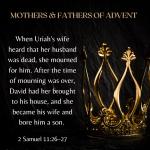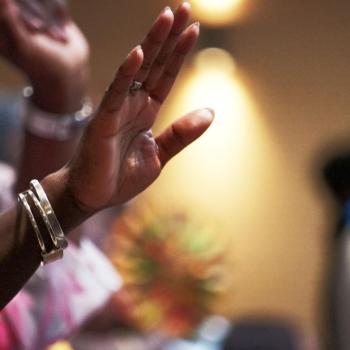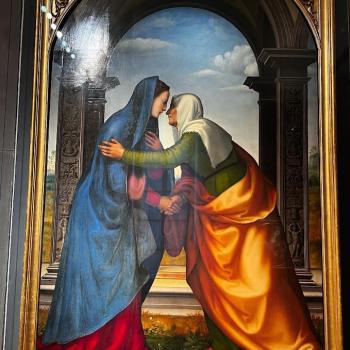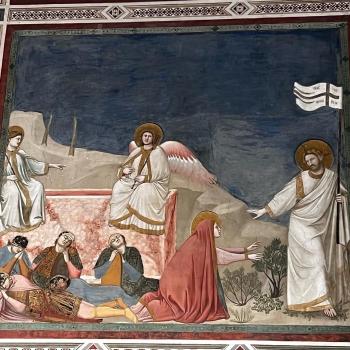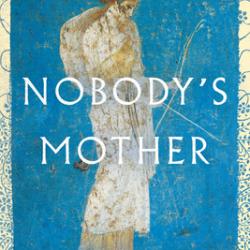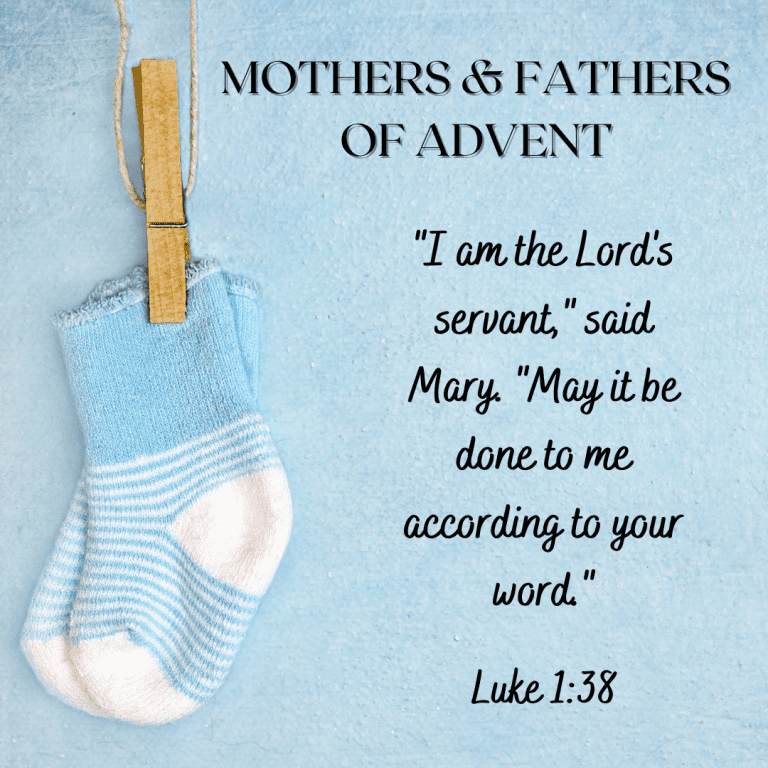
“Mary, did you know that your baby boy would one day rule the nations?”
Many Christmas carols mention, or even focus on, Mary the mother of Jesus. But Protestants would be hard-pressed to recall any significant teaching on her beyond the Christmas season. They just aren’t that into her. But, is that fair? In our haste to downplay Mary, what benefits have we missed?
Protestants’ Problem with Mary
The early church held Mary in great respect. In the first few centuries after her death, the church began to venerate her—grant her especially high honor. They held her, as they did many of the disciples, as a model of virtue, goodness, holiness. By the seventh century, her renown was so great that the Quran incorrectly stated that she was one of the Trinity.
Today, the Catholic Church declares four major points of “Marian” theology to be dogma, none of which are in scripture:
- She can be called “Mother of God” (Theotokos). If Jesus is fully God, and Mary is his mother, then she is mother of God. This title has become a matter of preference—some would rather “mother of Jesus” be used, but ultimately the honorific is accurate.
- Immaculate Conception: The idea that the mother of our savior must have been especially holy for God to have chosen her eventually morphed into the belief that she was born without original sin as well. Romans 3:23 argues against this. And even Mary stated, “My spirit rejoices in God my savior” (Luke 1:47).
- Ever-virgin: Scripture clearly states that Mary was a virgin when she conceived and gave birth to Jesus. But as asceticism and monasticism grew in popularity in the 4th and 5th centuries, sexuality was seen as too earthy, not holy. Mary’s virgin state at Jesus’s birth turned into perpetual virginity in order to accentuate her holiness. But scripture does not support that theology of the body (the gnostic belief that spiritual was better than material goes against the Incarnation itself as well as Creation), nor the idea that Mary and Joseph lived a platonic marriage. The New Testament refers to Jesus’s brothers and sisters on several occasions.
- The Assumption: Mary either did not die or her body was taken to heaven physically shortly after her death. Could God have chosen this ending for her? Certainly (see Elijah and Enoch). But since it is an unprovable belief based on tradition, making it dogma added another layer of separation between the Catholic and Protestant faith.
When the Protestant Reformation spread through Europe, Luther and Calvin and other pastoral leaders focused their teaching on Jesus. He was magnified and glorified, not other biblical persons. In their (understandable) preoccupation with Jesus, Protestant leaders ignored, squashed, played down the significance of other people such as Mary. In the centuries since then, Mary has been all but forgotten in Protestant teaching.
Sometimes we see a way of thinking that includes erroneous teaching, so we toss it all away—the proverbial baby in the bathwater. Protestants have done that with Mary. But the Bible shows us a Mary somewhere between Queen of Heaven and peasant girl. She is the fourth-most mentioned New Testament character after Jesus, Peter, and Paul.
Who or what was Mary and what can we learn from her?
- She was faithful: When Gabriel appeared to her with the amazing and disconcerting news that God had chosen her to bear the Messiah, Mary submitted. She asked a clarifying question (How is this going to work?), then answered, “May it be done to me according to your will” (Luke 1:38). Her acceptance of the angel’s words is placed in direct contrast with Zechariah the priest’s doubt when he was approached by Gabriel about his own miraculous son (1:18). Young, female, and poor vs. old, male, and ranking—with this contrast Luke begins a pattern of highlighting the lowly as favored by God, a counter-cultural, upside-down perspective.Matthew’s Gospel shows Mary as virtuous: against all expectations, Joseph accepted the angel’s declaration of Mary’s innocence and went through with the marriage. In their betrothal system, they were considered married, and family/neighbors would have assumed they jumped the gun a bit with a six-month baby, but Jesus would not have been considered illegitimate. Joseph assumed a fatherly responsibility for Jesus, who was known as “Joseph’s son” (Lk 4:22).
- She was pious: Mary was an excellent Jew, eager to follow the Law in spirit and letter. For instance, she and Joseph take baby Jesus to the temple (2:23–4), “according to the Law,” for his circumcision. They offered the required sacrifice of two pigeons, signifying their poverty. And Luke tells us that they went to the temple every year (2:41) for Passover. That’s intense. Only males were required to attend.
- She was theologically astute:
Mary knew her holy scriptures (our Old Testament): Her words to Elizabeth when they greeted one another (Luke 1), a prophecy known as the Magnificat, parallel the prayer of Hannah in 1 Samuel 2.
Mary knew God’s character: She recognized God’s faithfulness to his covenant with Abraham, Isaac, and Jacob. Her focus was on the faithfulness of God in bringing about the deliverance so long promised (1:50–55).
She spoke words of revolution: Mary proclaims that he scatters the proud/brings down rulers/sends rich away empty. He also lifts the humble/fills the hungry/helped Israel. Those who heard her words would learn of God’s subversive plan to uproot the proud and show mercy to the humble. In the world of the Magnificat, the Messiah’s coming heralded social and cultural change.
My friend Kaitlyn Schiess preached on the Magnificat just last weekend. Start listening at the 30-minute mark. I think you’ll agree that the Christmas story from Mary’s perspective adds greatly to our understanding of what God was doing in sending his Son.
4. Mary was Jesus’s first, best disciple:
While Mary accepted Gabriel’s announcement, she did not necessarily understand everything immediately. What we see throughout the Gospels is that she kept an open, learning attitude—pondering the events of his life. Elizabeth testified to her faith when she greeted her: “Blessed is she who has believed that the Lord would fulfill his promises to her!” (Luke 1:45) In John 2, at the wedding at Cana, she knew who Jesus was and trusted him to do right. After the wedding, she and his siblings moved to Capernaum with him (John 2:12). She stuck with him through his ministry, arrest, crucifixion, resurrection, ascension.
Mary was in the room at Pentecost (Acts 2). She gathered with the disciples after Jesus’s ascension, obeying Jesus’s direction to wait in Jerusalem. She (and the women of Luke 8:1–3) remained a devoted follower, anointed by the Spirit, for the rest of her life.
So, what did Mary know?
The rhetorical question that grounds the popular Christmas song “Mary Did You Know?” has come to irritate as much as inspire.
When understood as a literary device to contrast Jesus’s infant helplessness against his divine power, the song truly is powerful and moving. The repeated question, however, also highlights Mary rather than her son, leading some listeners to assume that we should wonder if she indeed knew anything about how extraordinary her son was.
Mary, did you know:
- That your baby boy would one day walk on water? Not literally
- That your baby boy would save our sons and daughter? Yes
- Has come to make you new, child that you delivered would soon deliver you? Yes
- Give sight to a blind man, calm a storm with his hand? not literally
- Has walked where angels trod? Yes
- You kissed the face of God? Yes
- Is lord of all creation, would one day rule the nations? Yes
- Is heaven’s perfect lamb? probably not
- Is the great I AM? Yes
By writing Mary off completely because of some bad theology, we miss out on the benefit of her as an amazing example of a thoughtful, reflective, obedient, faithful, intelligent, disciple whom Jesus adored.
This post is the last of five that explore the stories of the women named in Jesus’s genealogy:
The Moral Dilemmas of Judah and Tamar
A Woman (and Man) of Noble Character: Ruth and Boaz in Jesus’s Genealogy

